The 12 Most Beautiful Animals in Ecuador
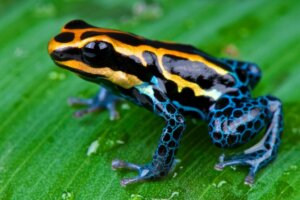

Written and verified by the biologist Georgelin Espinoza Medina
Ecuador is a South American country with an area of 283,561 square kilometers (about 110,000 square miles), with different ecosystems such as deserts, moors, forests, mangroves and oceans. This variety of ecosystems influences its fauna and it has an impressive biodiversity. Meet the 12 most beautiful animals in Ecuador.
This country is one of the 17 most biologically diverse countries, thanks to its excellent tropical location. It also has a large number of endemic species, that is, species that only exist in that country. Read on and get to know some of the beautiful animals in Ecuador!
The most beautiful animals in Ecuador
Ecuador’s animals stand out for their striking colors, interesting behavior, and their exclusive distribution in these tropical lands. Although we’d like to name them all, we’ve limited ourselves to our selection of what we believe to be the most beautiful animals in Ecuador – maybe it’ll inspire you to visit this wonderful country! Don’t miss it!
1. Oncilla (Leopardus tigrinus)
We begin the list with a beautiful feline: the oncilla, also known as the northern tiger, little-spotted cat, and tigrillo. It’s the smallest representative of its group, with a body between 45 and 65 centimeters (18 to 25 inches) in length and a tail of 25-35 centimeters (10 to 14 inches) when extended.
This animal has a cute appearance with its striped fur and irregular dark rosettes on a yellow or light brownish tone. But don’t be fooled by its appearance, as it’s a very agile hunter and climber. Its fur is coveted, which has caused it to be poached and its population to decline over the years.
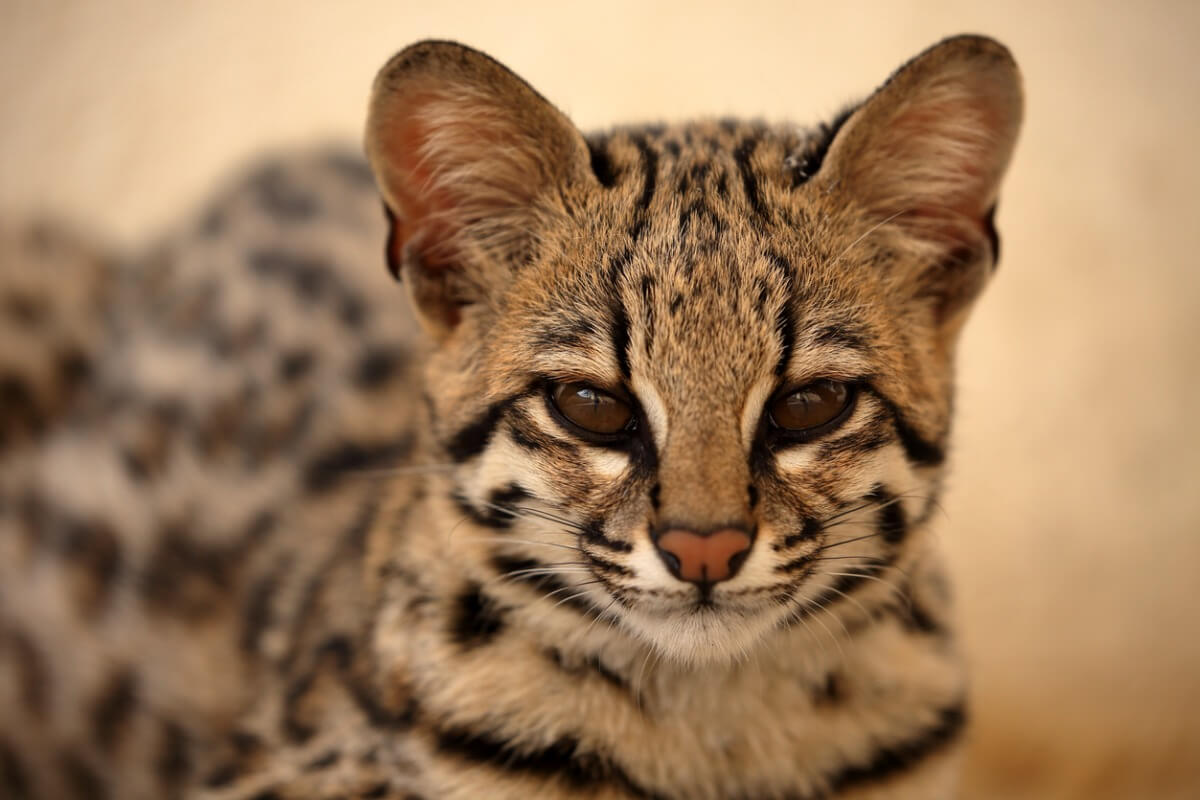
2. Philodryas amaru
In Ecuador, there are 432 different reptiles, and among them we have this endemic specimen, the Philodryas amaru. It’s only found in the province of Azuay, in the Yanuncay River, between 2600 and 4000 meters (8530 to 13100 feet) above sea level. The snake stands out with its bright shades of light brown, green and yellow. It is oviparous, carnivorous, and non-venomous, and can reach 91 centimeters (35 inches) in length.
This snake was discovered in the last decade. Aspects related to its biology and conservation status are still unknown.
3. Laura’s glass frog (Nymphargus laurae)
Ecuador is third in the world in amphibian diversity and has many endemic species, and our list will contain a selection of them. The first to be mentioned is this peculiar frog, a small green frog with black dots with a yellow center. It’s a sight to behold and is exclusive to the region.
This frog is classified as “critically endangered” according to the International Union for Conservation of Nature (IUCN) due to deforestation, agricultural practices, and the fragmentation of its habitat. As a curious fact, we can say that the name “laura” or laurae, that its name comes from, refers to the grandmother of one of the scientists who described it for the first time.

4. Great sapphirewing (Pterophanes cyanopterus)
In Ecuador, there are more than 130 species of hummingbirds (equivalent to 38% of the worldwide total), so we couldn’t fail to name a hummingbird in our list. Although all of them are beautiful, in this case, we have chosen the great sapphirewing.
This hummingbird is green, but it dazzles us with its metallic sapphire blue wings when it flies. It measures up to 17 centimeters (nearly 7 inches) and its bill is about 3 centimeters (1.2 inches) long. It has a long, forked green tail. It also has a characteristic slow flight.
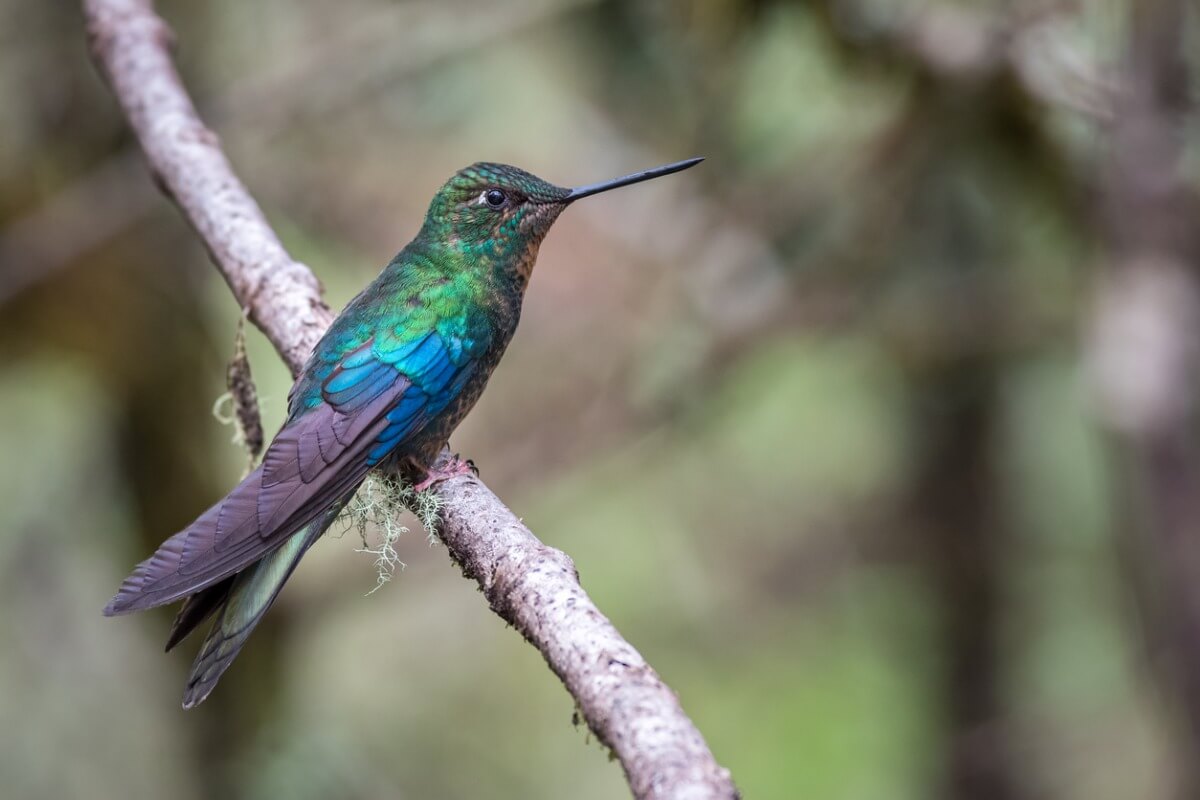
5. Whale shark (Rhincodon typus)
The whale shark is the largest fish in the world, reaching sizes of up to 12 meters (nearly 40 feet) in length and weighing about 34 tons. Don’t let its size fool you: it isn’t a very aggressive species and it feeds by filtration, something that’s very different from the behavior of other sharks.

6. Fernandina Island Galapagos tortoise (Chelonoidis phantasticus)
There are several species of giant tortoises endemic to Ecuador that look truly amazing, as is the case of Chelonoidis phantasticus. This species has a dark-black-grayish carapace and gray head and neck, but the throat area is yellow.
This reptile is critically endangered according to the IUCN and was even thought to be extinct, but a female was found in 2019, which is currently located in a turtle breeding center. The main threat of extinction suffered by this species is an active volcano in its natural habitat, Fernandina Island.
7. Pygmy marmoset (Cebuella pygmaea)
The pygmy marmoset is the smallest of its kind in the world. In Ecuador, it lives in the tropical forests of the Amazon between 200 and 940 meters (650 to 3000 feet approx.) above sea level. It’s hairy and has large eyes, which make it look very cute. It is omnivorous, diurnal and arboreal.
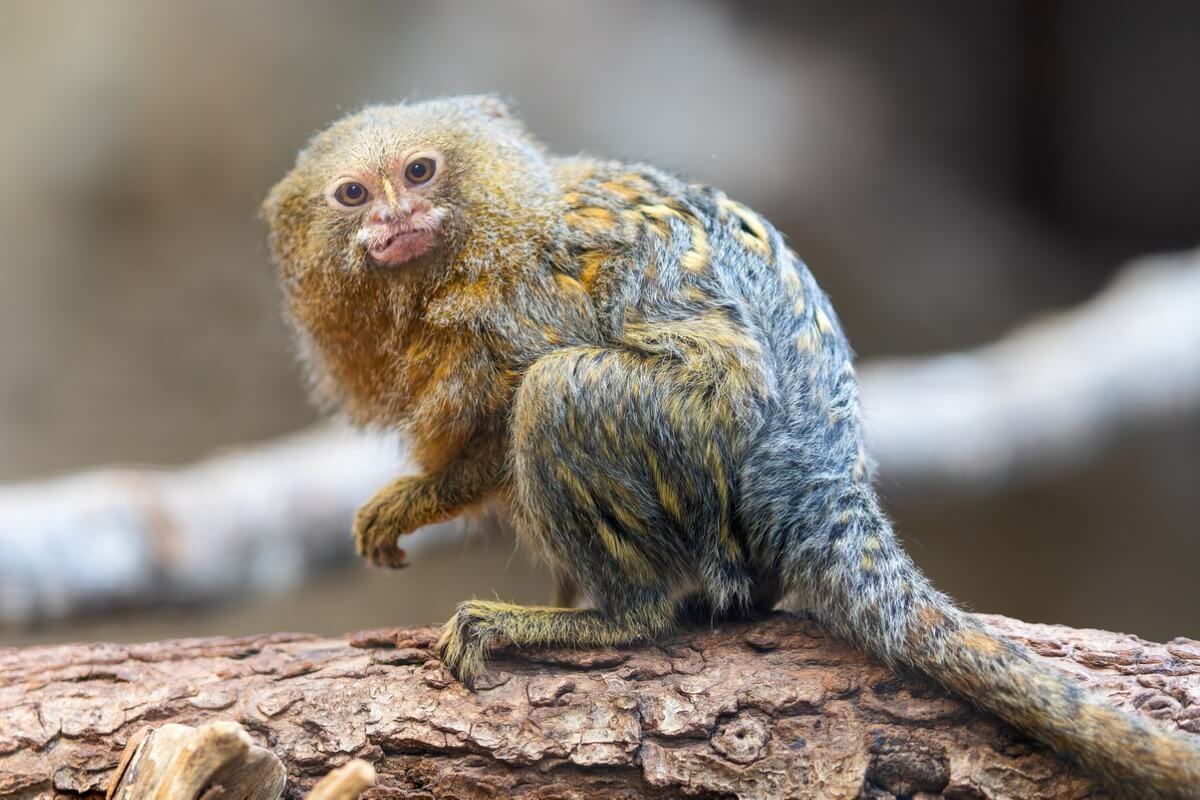
8. Red-throated wood lizard (Enyalioides rubrigularis)
Another interesting reptile from Ecuador that deserves to be on this list is the red-throated wood lizard, which has a green body with a red throat (as its name suggests). It’s an endemic species that reaches 13 centimeters (just over 5 inches) in length from the face to the cloaca.
As a curious fact, this species can change its body color, as it varies from green to brown or yellow tones. It has a vulnerable conservation status according to the IUCN. Its main threat is deforestation.
9. Anthony’s poison arrow frog (Epipedobates anthonyi)
This poison arrow frog is an amphibian native to South America, particularly Ecuador and Peru. It stands out for its striking colors that make it one of the most beautiful frogs you could see, but this actually means that its skin contains poisonous toxins.
This frog is red, with white or cream lines on its back. The ventral area has brown or reddish tones with aquamarine lines. This fascinating color combination is a sign that serves as a warning to its predators.
10. Páramo wolf (Lycalopex culpaeus)
The páramo wolf or culpeo is a large South American canid. It has a grayish body tone, in which its head and reddish legs stand out. Its tail is quite furry, as is the rest of its body. It’s a hunter, but has a varied diet that includes carrion if necessary.
11. Galapagos penguin (Spheniscus mendiculus)
Another interesting bird from Ecuador that’s well worth a place on our list is the endemic Galapagos penguin. It’s small (it barely reaches 49 centimeters – less than 20 inches – in length) but it’s very bold, as it takes advantage of the cold currents to survive in this tropical environment. In addition, it spends most of the day in the water.
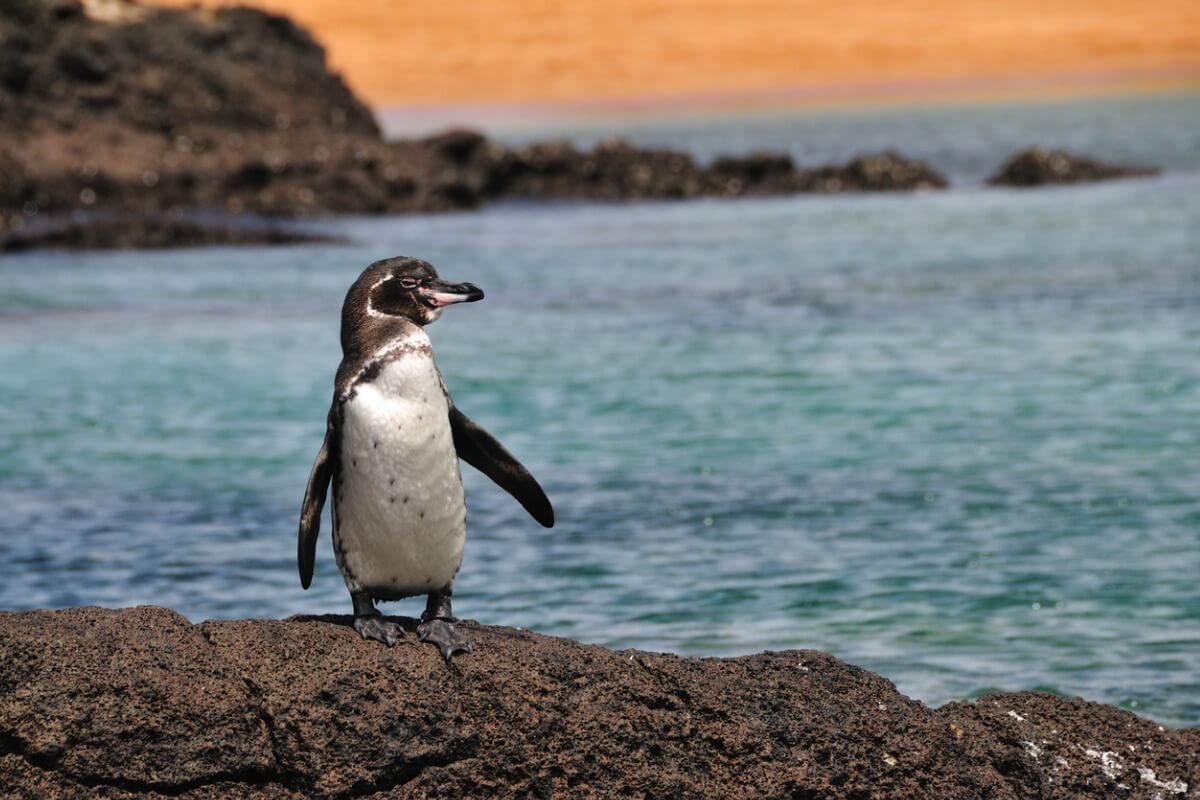
12. Amazonian manatee (Trichechus inunguis)
The Amazonian manatee inhabits the Amazon River and its tributaries. It’s large and heavy (2.8 meters long – over 9 feet – and up to 500 kilograms – 1100 pounds – in mass). Its skin coloration is dark with white spots. It’s actually a shy and solitary animal, despite its large size.
This is the end of our list of the 12 most beautiful animals in Ecuador, but we have undoubtedly fallen short, as there are so many incredible species that exist in this small country. The high rate of endemic species makes this region one of the most fascinating on Earth. What are you waiting for to visit it?!
Ecuador is a South American country with an area of 283,561 square kilometers (about 110,000 square miles), with different ecosystems such as deserts, moors, forests, mangroves and oceans. This variety of ecosystems influences its fauna and it has an impressive biodiversity. Meet the 12 most beautiful animals in Ecuador.
This country is one of the 17 most biologically diverse countries, thanks to its excellent tropical location. It also has a large number of endemic species, that is, species that only exist in that country. Read on and get to know some of the beautiful animals in Ecuador!
The most beautiful animals in Ecuador
Ecuador’s animals stand out for their striking colors, interesting behavior, and their exclusive distribution in these tropical lands. Although we’d like to name them all, we’ve limited ourselves to our selection of what we believe to be the most beautiful animals in Ecuador – maybe it’ll inspire you to visit this wonderful country! Don’t miss it!
1. Oncilla (Leopardus tigrinus)
We begin the list with a beautiful feline: the oncilla, also known as the northern tiger, little-spotted cat, and tigrillo. It’s the smallest representative of its group, with a body between 45 and 65 centimeters (18 to 25 inches) in length and a tail of 25-35 centimeters (10 to 14 inches) when extended.
This animal has a cute appearance with its striped fur and irregular dark rosettes on a yellow or light brownish tone. But don’t be fooled by its appearance, as it’s a very agile hunter and climber. Its fur is coveted, which has caused it to be poached and its population to decline over the years.

2. Philodryas amaru
In Ecuador, there are 432 different reptiles, and among them we have this endemic specimen, the Philodryas amaru. It’s only found in the province of Azuay, in the Yanuncay River, between 2600 and 4000 meters (8530 to 13100 feet) above sea level. The snake stands out with its bright shades of light brown, green and yellow. It is oviparous, carnivorous, and non-venomous, and can reach 91 centimeters (35 inches) in length.
This snake was discovered in the last decade. Aspects related to its biology and conservation status are still unknown.
3. Laura’s glass frog (Nymphargus laurae)
Ecuador is third in the world in amphibian diversity and has many endemic species, and our list will contain a selection of them. The first to be mentioned is this peculiar frog, a small green frog with black dots with a yellow center. It’s a sight to behold and is exclusive to the region.
This frog is classified as “critically endangered” according to the International Union for Conservation of Nature (IUCN) due to deforestation, agricultural practices, and the fragmentation of its habitat. As a curious fact, we can say that the name “laura” or laurae, that its name comes from, refers to the grandmother of one of the scientists who described it for the first time.

4. Great sapphirewing (Pterophanes cyanopterus)
In Ecuador, there are more than 130 species of hummingbirds (equivalent to 38% of the worldwide total), so we couldn’t fail to name a hummingbird in our list. Although all of them are beautiful, in this case, we have chosen the great sapphirewing.
This hummingbird is green, but it dazzles us with its metallic sapphire blue wings when it flies. It measures up to 17 centimeters (nearly 7 inches) and its bill is about 3 centimeters (1.2 inches) long. It has a long, forked green tail. It also has a characteristic slow flight.

5. Whale shark (Rhincodon typus)
The whale shark is the largest fish in the world, reaching sizes of up to 12 meters (nearly 40 feet) in length and weighing about 34 tons. Don’t let its size fool you: it isn’t a very aggressive species and it feeds by filtration, something that’s very different from the behavior of other sharks.

6. Fernandina Island Galapagos tortoise (Chelonoidis phantasticus)
There are several species of giant tortoises endemic to Ecuador that look truly amazing, as is the case of Chelonoidis phantasticus. This species has a dark-black-grayish carapace and gray head and neck, but the throat area is yellow.
This reptile is critically endangered according to the IUCN and was even thought to be extinct, but a female was found in 2019, which is currently located in a turtle breeding center. The main threat of extinction suffered by this species is an active volcano in its natural habitat, Fernandina Island.
7. Pygmy marmoset (Cebuella pygmaea)
The pygmy marmoset is the smallest of its kind in the world. In Ecuador, it lives in the tropical forests of the Amazon between 200 and 940 meters (650 to 3000 feet approx.) above sea level. It’s hairy and has large eyes, which make it look very cute. It is omnivorous, diurnal and arboreal.

8. Red-throated wood lizard (Enyalioides rubrigularis)
Another interesting reptile from Ecuador that deserves to be on this list is the red-throated wood lizard, which has a green body with a red throat (as its name suggests). It’s an endemic species that reaches 13 centimeters (just over 5 inches) in length from the face to the cloaca.
As a curious fact, this species can change its body color, as it varies from green to brown or yellow tones. It has a vulnerable conservation status according to the IUCN. Its main threat is deforestation.
9. Anthony’s poison arrow frog (Epipedobates anthonyi)
This poison arrow frog is an amphibian native to South America, particularly Ecuador and Peru. It stands out for its striking colors that make it one of the most beautiful frogs you could see, but this actually means that its skin contains poisonous toxins.
This frog is red, with white or cream lines on its back. The ventral area has brown or reddish tones with aquamarine lines. This fascinating color combination is a sign that serves as a warning to its predators.
10. Páramo wolf (Lycalopex culpaeus)
The páramo wolf or culpeo is a large South American canid. It has a grayish body tone, in which its head and reddish legs stand out. Its tail is quite furry, as is the rest of its body. It’s a hunter, but has a varied diet that includes carrion if necessary.
11. Galapagos penguin (Spheniscus mendiculus)
Another interesting bird from Ecuador that’s well worth a place on our list is the endemic Galapagos penguin. It’s small (it barely reaches 49 centimeters – less than 20 inches – in length) but it’s very bold, as it takes advantage of the cold currents to survive in this tropical environment. In addition, it spends most of the day in the water.

12. Amazonian manatee (Trichechus inunguis)
The Amazonian manatee inhabits the Amazon River and its tributaries. It’s large and heavy (2.8 meters long – over 9 feet – and up to 500 kilograms – 1100 pounds – in mass). Its skin coloration is dark with white spots. It’s actually a shy and solitary animal, despite its large size.
This is the end of our list of the 12 most beautiful animals in Ecuador, but we have undoubtedly fallen short, as there are so many incredible species that exist in this small country. The high rate of endemic species makes this region one of the most fascinating on Earth. What are you waiting for to visit it?!
All cited sources were thoroughly reviewed by our team to ensure their quality, reliability, currency, and validity. The bibliography of this article was considered reliable and of academic or scientific accuracy.
- Barriga, R. (2012). Lista de peces de agua dulce e intermareales del Ecuador. Revista Politécnica, 30(3), 83-119.
- Cisneros-Heredia, D. (2008). Nymphargus laurae. The IUCN Red List of Threatened Species 2008: e.T135996A4223953. https://dx.doi.org/10.2305/IUCN.UK.2008.RLTS.T135996A4223953.en.
- Cisneros-Heredia, D., Valencia, J., Almendáriz, A., Brito, J. & Munoz, G. (2019). Enyalioides rubrigularis. The IUCN Red List of Threatened Species 2019: e.T44579003A44579015. http://dx.doi.org/10.2305/IUCN.UK.2019-2.RLTS.T44579003A44579015.en.
- Payan, E. & de Oliveira, T. (2016). Leopardus tigrinus. The IUCN Red List of Threatened Species 2016: e.T54012637A50653881. https://dx.doi.org/10.2305/IUCN.UK.2016-2.RLTS.T54012637A50653881.en.
- Rhodin, A., Gibbs, J., Cayot, L., Kiester, A., & Tapia, W. (2017). Chelonoidis phantasticus (errata version published in 2018). The IUCN Red List of Threatened Species 2017: e.T170517A128969920. https://dx.doi.org/10.2305/IUCN.UK.2017-3.RLTS.T170517A1315907.en.
This text is provided for informational purposes only and does not replace consultation with a professional. If in doubt, consult your specialist.








